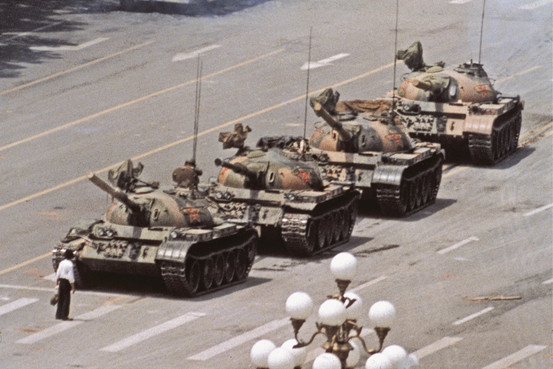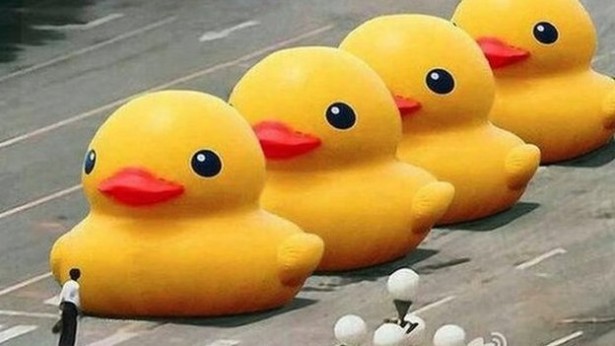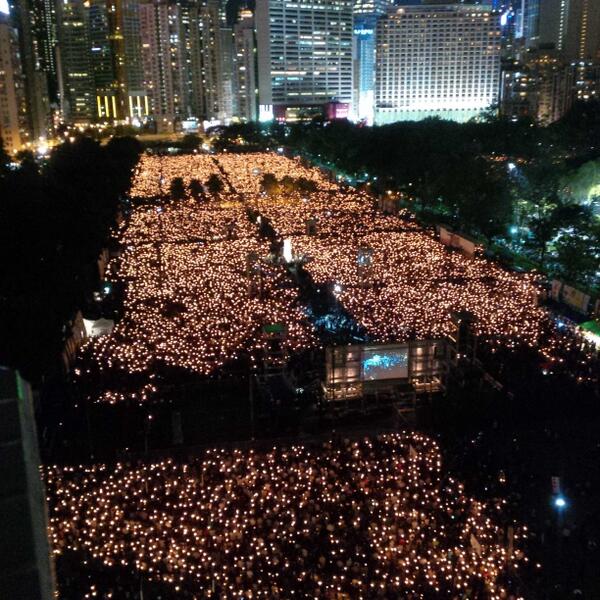
The identity man in this photograph, taken by photographer Jeff Widener a couple of days after the Tiananmen Square massacre, remains unknown.
In the spring of 1989, I was still a few months off being born. Despite this, I recognize the iconic image above: one man putting himself in harm’s way in order to stand in the path of weapons of oppression.
This week marks the 25th anniversary of the Tiananmen Square massacre. For seven weeks, democracy demonstrators had occupied the square in relative peace, with the Chinese authorities showing miraculous restraint. It was the pinnacle of a movement that, at its height, had seen more than a million people marching through Beijing to protest against the ruling Communist Party. Yet on the 3rd of June 1989, this restraint tipped into abuse, followed by slaughter. There are no official death tolls for the Tiananmen Square massacre, but most estimates are in the hundreds.
To this day, it is illegal to talk about the Tiananmen Square massacre in the China. In the lead up to the anniversary, dozens of words and images have been censored on ‘Weibo’ (the Chinese version of twitter). Some have responded with powerfully playful images like the one below.

On this anniversary, both words and images have associated with the Tiananmen Square massacre have been banned on Weibo, the Chinese version of twitter. Some have responded with Photoshoped images, such as the one above.
Hong Kong is the only Chinese territory where the events of the evening of June the 3rd and early hours of 4th 1989 is allowed – yesterday there was a candlelit vigil attended by more than 100,000. But the iconic image of the ‘Tank man’ has remained a symbol of peaceful protest across the world.
Tiananmen is a reminder that fighting for peace isn’t passive. Whether it’s in the streets with hand-painted signs, standing in front of tanks, or in helicopters telling members of the LRA that they don’t have to fear defection, peaceful action requires courage, commitment and sacrifice. This one man standing in front of a tank has come to represent thousands (if not millions) of Chinese activists, many of whom lost their lives by the hands of an oppressive regime. Those of us who want to be identified as activists for peace truly stand on the shoulders of giants.

Organizers of the vigil in Hong Kong last night claim it was attended by more than 180,000.
(Photo credits: Jeff Widener, BBC, Heather Timmons)
Think people should hear about this?